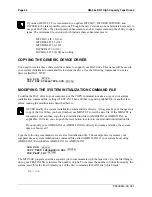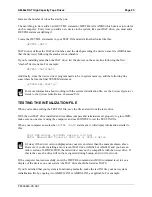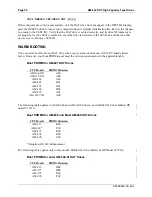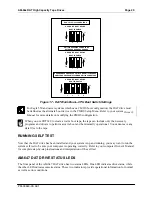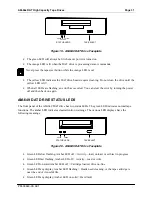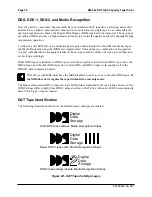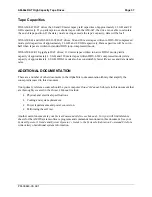
Page 36
AM-64x DAT High Capacity Tape Drives
PDI-00649-00, A01
DDS, DDS-1, DDS-2, and Media Recognition
Over the past few years many improvements have been made to DAT tape drives, allowing newer drive
models to use a higher compression scheme and store more data on a single tape. To accommodate the
new high compression scheme, the Digital Data Storage (DDS) tape had to be improved. The new tapes
are labeled DDS-2 and have a higher density substrate to provide the quality needed for dependable high
compression operation.
To allow the new DAT drives to automatically recognize and self-adjust for the different density tapes,
the Media Recognition System (MRS) was implemented. This system is a combination of recognition
"stripes" imbedded in the transparent leader of the new tapes and the ability of a drive to read them and
set itself up accordingly.
Older DDS tapes are identical to DDS-1 tapes, with the exception that the newer DDS-1 tapes have the
MRS stripes, and the older DDS tapes do not. Both DDS and DDS-1 tapes work equally well in the
DDS-DC data compression mode.
DAT drives with MRS must have the MRS disabled in order to write to the older DDS tapes. If
the MRS does not recognize the tape it defaults to read-only mode!
The higher compression DDS-2 tapes also have MRS stripes imbedded in the tape leader. However, the
DDS-2 stripes differ slightly from DDS-1 stripes to allow a DAT drive with active MRS to automatically
detect which type of tape is loaded.
DAT Tape Identification
The following illustrations show how the different tape cartridges are labeled:
Digital
Data
Storage
Digital
Data
Storage
Digital
Data
Storage
2
Older DDS tapes without Media Recognition Stripes
Newer DDS-1 tapes with Media Recognition Stripes
DDS-2 tapes always include Media Recognition Stripes
Figure 22 - DAT Tape Cartridge Logos



